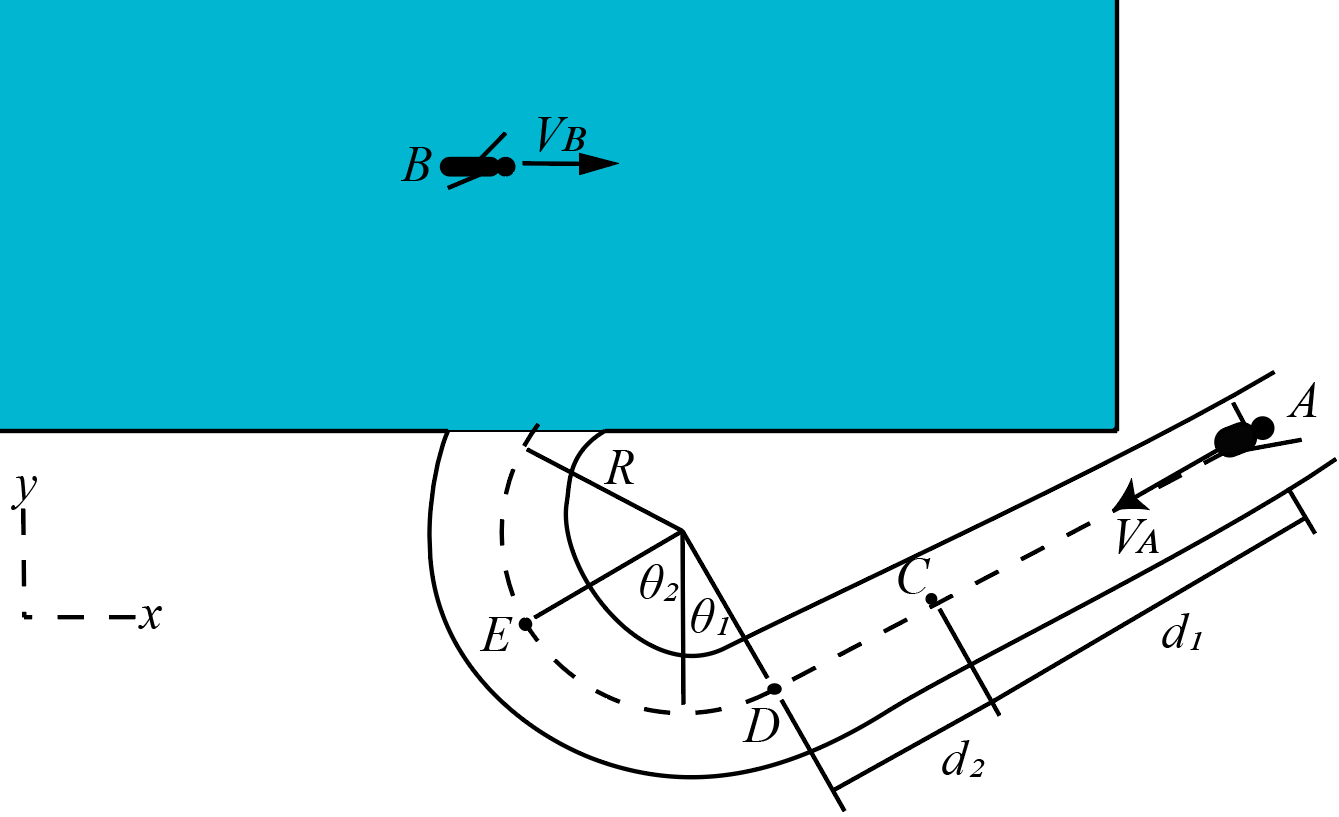Relative Motion of Lazy River#

A child, A, floats down the lazy river, at a constant speed of \({{params.v_AB}} m/s\) relative to the swimmer B, who is swimming in a straight line at a constant speed of \({{params.v_B}} m/s\) relative to a stationary observer on the pool deck. Both swimmers are viewed in the horizontal plane. In the above figure, \(\theta\_{1} = {{params.theta1}}\), \(\theta\_{2} = {{params.theta2}}\), \(d\_{1} = {{params.d1}}\), and \(d\_{2} = {{params.d2}}\). Note that the line between \(\theta\_{1}\) and \(\theta\_{2}\) is parallel to the y-axis.
Part 1#
What is the x-component of the velocity that child A appears to have at C relative to the observer on the pool deck?
Answer Section#
Please enter in a numeric value in \(m/s\).
Part 2#
What is the y-component of the velocity which child A appears to have at C relative to the observer on the pool deck?
Answer Section#
Please enter in a numeric value in \(m/s\).
Part 3#
What is the x-component of the velocity which child A appears to have at E relative to the observer on the pool deck?
Answer Section#
Please enter in a numeric value in \(m/s\).
Part 4#
What is the y-component of the velocity which child A appears to have at E relative to the observer on the pool deck?
Answer Section#
Please enter in a numeric value in \(m/s\).
Attribution#
Problem is licensed under the CC-BY-NC-SA 4.0 license.

